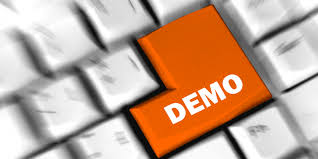In this article we are going to discuss the fact that the results in your demo account are likely to contrast significantly with the results in your real account.
When most people start trading, they think that their results when operating with virtual money will be the same when it comes to operating with real money. Of course, this is hardly ever the case. The reason for this is that a person’s emotions greatly impact their ability to make decisions when it comes to real money. We will examine why this happens and give some tips to try to reduce this important aspect a little.

Demo Account vs Real Account in Forex
To begin, I want to make clear that I have nothing against demo accounts. Any beginner should use a demo account to familiarize himself with the basic mechanisms of his trading platform. It also allows people to practice specific strategies and determine their validity before doing it for real money. Another good use is when a trader is on a losing streak, it’s good to spend time on a demo account. When an operator is having a succession of losing trades, his brain is so focused on money that no matter what he does, everything goes wrong. Switching to a demo account can ease that pressure and remind you that you still know how to trade well.
As I said before, one of the biggest advantages of demo accounts is to try new strategies without risking real money. However, the results of a demo account are generally not the same when it comes to switching to a live account.
For starters, there is a basic reason why trading a demo account seems “easier.” The reason is that you can reload the virtual money used at any time, and start again. So what is the risk? There is no risk. If you screw up, you can simply start again without any consequence or penalty. This takes enormous pressure off him. You could pop 5 accounts and win big with one. But that does not mean that you will be able to repeat that great gain in an account again. This is the first aspect to consider with a demo account, but there are other more important factors than this.
Let’s suppose we have already accepted the obvious reasons why a demo account is not a 100% accurate predictor of the results of a live account. Suppose you have some idea of what you are doing, using proper risk management, you have a good strategy and you have been consistently working well on your demo account. The reality is that it is much easier to follow the rules when there is no real money at stake. A trader’s emotions are much stronger when trading for real money than when trading in a demo. If you don’t believe me, you may not have been operating with real money for a long time. With real money you will be tempted to make a number of mistakes out of fear or greed: move your stop beyond what was initially determined, exit a winning position before reaching the set level, open positions that did not meet all prerequisites, opening positions to “avenge” a previous loss, etc. I can keep mentioning many of these errors and you may possibly have your own list of “errors” yourself that you could add.
How to make your results with real money resemble your results in a Forex demo account?
The first thing is to start trading using small positions with real money. Don’t start by risking what you would think is normal to risk. If you are trading very small positions, you will not ruin your account, but you will learn what mistakes you make now that you are trading on a live account. Even if you are risking small amounts of money with each operation, your brain will work differently than it would when operating on a demo account.
Once you start making mistakes trading real money as I described earlier, make a note of what happens. Write down the mistakes that went through your mind, why you made that decision and why what you did was wrong. The next step is to write a solution to this problem. This will allow you to develop valuable “rules” that will protect you from your own emotions when trading on Forex. In my opinion, it is not easy (but far from impossible) to correct these errors before feeling the pain of losing money due to the error (even if it is a very small amount that you risk per operation).
Continue this process until you become more consistent in following your plan of trading.. Of course, you will never completely eliminate new mistakes, but following this process will help you become much more consistent in following your plan and not deviating from your strategy.
This article may be a brief explanation of how to minimize the impact of moving from a demo account to a live account, but I would like to emphasize how important it is to start by risking small amounts of real money. Don’t trade a demo account forever because you only get certain levels of experience. Trade your demo account until you have a basic trading plan (with your own trading system and money management plan) that you are comfortable trading with. At that point, trade small trades on a live account and you will be able to improve your trading levels much more quickly than if you continued trading on your demo account for months on end.
